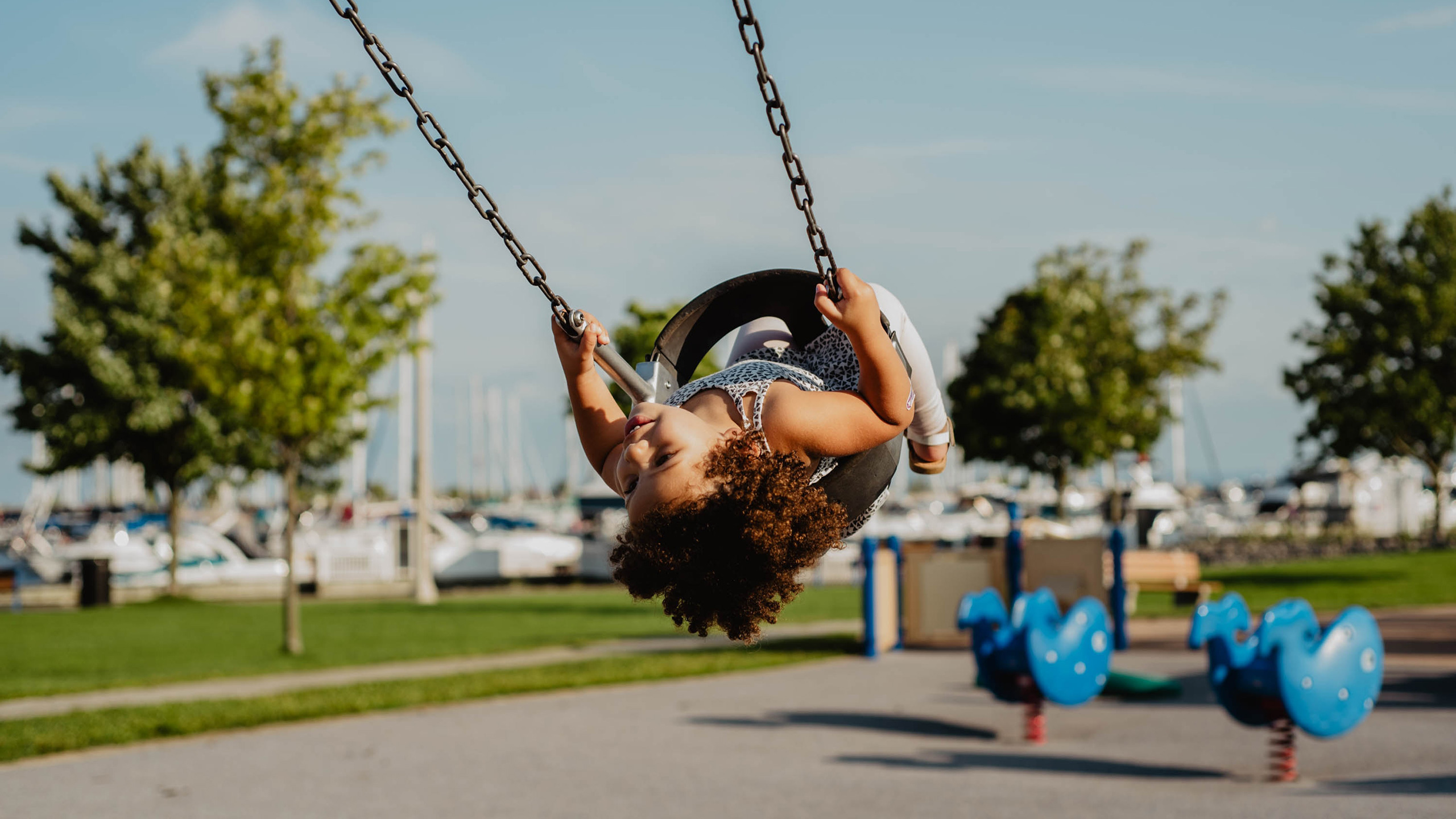Given the impact of high outdoor temperatures on the health of small children, we might want to start thinking of shade as critical infrastructure and trees as an essential element of every childhood. Sufficient shade is not only a question of aesthetics, but also a matter of health and equity, especially for younger children and other vulnerable groups. At the most basic level, kids just play less when it’s hot—which might seem intuitive but can have serious implications for children’s well-being in a warming world.

“We know that physical activity is a foundation for children’s health,” says Dr. Andrew Koepp, a researcher with the University of Texas Department of Human Development and Family Sciences. “Physical activity promotes bone, muscle and heart health. Most medical organizations recommend that children ages 3 to 5 be involved in some non-sedentary activity for about three hours throughout the day.
“At the same time, we know with climate change we’re expecting more hot days and that will impact children’s activity levels.”
Koepp led a study to help determine just how great that impact might be—the first study of its kind on preschoolers.
“We knew there had been some studies on adults and older children about how heat impacts their physical activity outside,” he says, “but we weren’t finding any studies that were specific for preschoolers. That’s important because young children are a sensitive group—much more vulnerable to the heat than adults because their bodies are not as efficient at releasing heat.”
The paper, “Ambient Temperature Increases and Preschoolers’ Outdoor Physical Activity,” was published in the May 2023 issue of the Journal of the American Medical Association Pediatrics. The study took place over two weeks in April 2022 with 47 children aged 3 to 6 attending the university-based laboratory preschool in Austin, Texas. The playground is partially shaded, and researchers monitored air temperature and relative humidity data hourly. The preschoolers, a mix of male and female, Asian, Hispanic, White and “other race or ethnicity,” were outfitted with a hip-worn device like a very precise junior Fitbit to measure their physical activity. The ambient temperatures during their outdoor play ranged from 72 to 95 degrees Fahrenheit.
On days with higher temperatures, the children engaged in more sedentary behavior and less moderate-to-vigorous physical activity. On days when the ambient temperature was in the lower range, the children ran around, climbed, or played games 27 percent of the time. When the temps reached into the 90s, the children were only active 21 percent of the time.
Though the study is a small one, the researchers are repeating the experiment at different times of the year at other preschools in the Austin area to further develop the data. The results are important for several reasons, Koepp says, not least because they show the difference having shaded playgrounds can make.
In another study led by one of Koepp’s co-authors, Dr. Kevin Lanza of the Michael and Susan Dell Center for Healthy Living at The University of Texas Health Science Center, researchers noted as much as a 10-degree difference between the shaded and unshaded parts of playgrounds. On a 90 degree day, this is the difference between “extreme caution” and “danger” levels for risk of heat illness, according to the National Weather Service.
“This underscores that the built environment can have a really big impact on the temperature in the city,” Koepp says. In Koepp’s and Lanza’s studies, preschoolers had the option (which they exercised) of heading for the shade, situating themselves under big trees when it was really hot. For millions of U.S. children, that is not an option.
According to American Forests, a map of tree cover in the U.S. is often a map of income and race. Due to decades of discriminatory policies such as redlining, trees, with their capacity to clean and cool the air, are often sparse in neighborhoods with people of color and low-income families. Low-income and socially marginalized populations are also more at risk because they have less access to climate-controlled housing.
In urban heat islands created by extensive concrete and pavement with few trees and green spaces, daytime temperatures can be as much as 7 degrees higher than temperatures in outlying areas. In cities where the humidity is high, vegetation reduced, with buildings denser and the population greater, temperatures can climb even higher—up to a scorching 20 or more degrees hotter in the urban core of some of the largest cities in the U.S.
Heat Hits Some Kids Harder
The children in Koepp’s study had other advantages besides trees on their playground.
“The group of kids who participated in our study came from relatively affluent families in the area,” he said. “The center has a lot of green outdoor space and the children in the sample were healthy. They had BMIs that were in the normal range, and none had asthma.
“It’s remarkable that we see this pattern of findings of the children being less active on hot days among these totally healthy kids. Children who are heavier are going to heat up faster, and we may see stronger findings in children with other health concerns.”
Children with asthma, which disproportionately affects Black and Native American children, are especially sensitive to heat, which can trigger an attack and irritate already narrowed airways. Though preschool children are unlikely to develop Type 2 diabetes, children as young as 10 are now being diagnosed with the disease, which puts them at particular risk from the heat. According to the Centers for Disease Control, complications related to diabetes can make it tougher for the body to cool itself, leading to heat exhaustion and heat stroke.
Heat may be one of the major human-rights issues of the coming decades. According to Frederica Perera in Children’s Health and the Peril of Climate Change, without rapid global action to reduce global emissions, children born in 2020 will experience two to seven times more extreme heatwaves on average in their lifetimes than people born in 1960.
While we can’t immediately turn around the forces driving climate change we can work to mitigate as much heat in children’s environments as possible. In addition to planting trees, schools, communities and urban planners can take other steps to relieve the heat, particularly for the youngest and most vulnerable residents.
Koepp and his co-researchers suggest that something as simple as providing water tables, sprinklers and hoses can help children stay cooler. Misters and fans can help, as can sending the children out to play during the coolest times of the day.
Koepp says their hope is that the research they’re doing into how heat affects small children, and the difference sufficient shade can make will be of use not only to schools but also to public health officials, urban planners and others looking to design children’s spaces.
“Climate change is happening,” he says. “And we have to learn to live with it.” That doesn’t mean that children will have to live indoors, he says, but it will take diligence and thoughtful planning to make certain they can safely get the exercise they need to grow up strong and healthy.
Resources
- Green Schoolyards Project A research project to investigate how green features—gardens, trees and nature trails—in school parks impact the heat index within the playground and affect children’s physical activity levels and socioemotional well-being.
- American Forests Founded in 1875, American Forests creates healthy, resilient forests throughout the U.S. Its Tree Equity Score uses data tools to address the inequity of tree scarcity in socioeconomically disadvantaged and neighborhoods of color.
- JAMA Pediatrics “Ambient Temperature Increases and Preschoolers’ Outdoor Physical Activity”
- BMC Public Health “Effects of trees, gardens and nature trails on heat index and child health: design and methods of the Green Schoolyards Project”
- Environmental Protection Agency “Learn About Heat Islands”

K.C. Compton
K.C. Compton worked as a reporter, editor and columnist for newspapers throughout the Rocky Mountain region for 20 years before moving to the Kansas City area as an editor for Mother Earth News. She has been in Seattle since 2016, enjoying life as a freelance and contract writer and editor.



